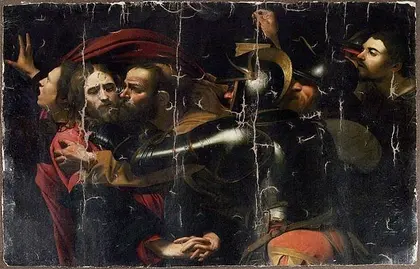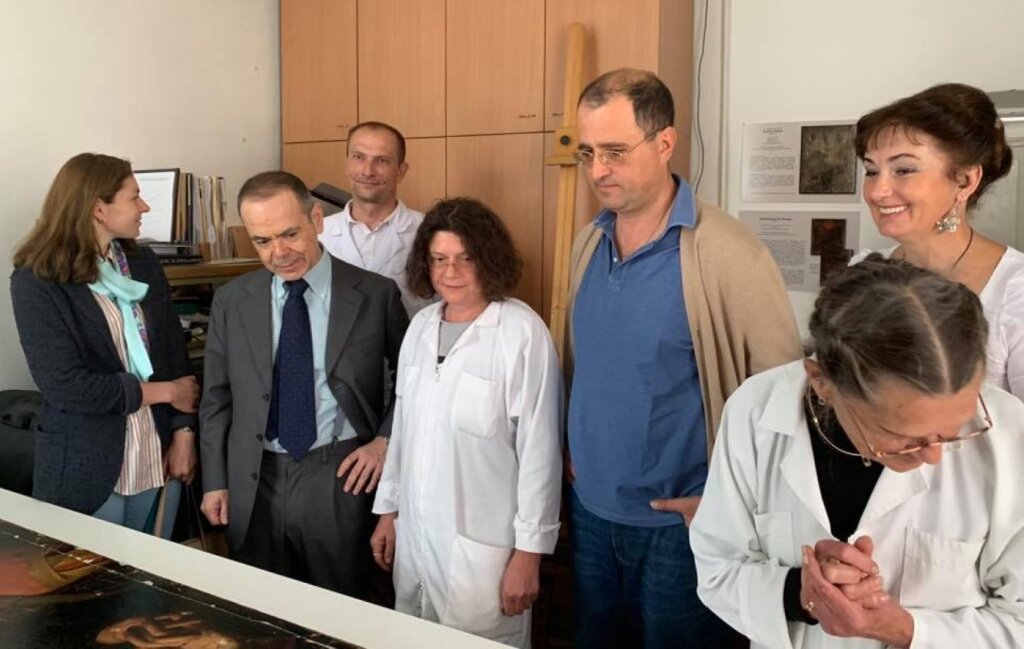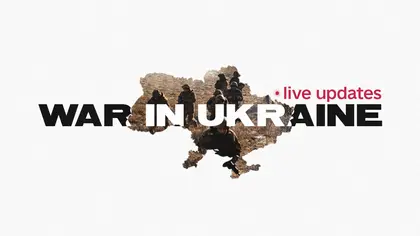The Taking of Christ, by Italian Baroque master Michelangelo Merisi da Caravaggio, was stolen in Odesa and later recovered in 2008. But its authenticity remains in question and the intrigue shows no end in sight.
It is believed to be an original work of art by Caravaggio himself, and yet hardly anyone is aware that a painting by the Italian genius, depicting the arrest of Jesus, resides in Ukraine. Why you might ask, is this iconic masterpiece not drawing hordes of tourists to the Odesa Museum where it once hung?
To answer such a question is not simple, because the history of The Taking of Christ painting by Caravaggio, is almost as strange as the tempestuous Italian painter.
A colourful history
The painting first emerges in the history books when, in the mid-19th century, it was brought to Grand Duke Vladimir Alexandrovich Romanov of Russia by a collector. Later, in 1901, Caravaggio’s work was donated to Odessa by the St. Petersburg Academy of Arts. Then, in 1923, under the Soviet Union, the painting entered the Odesa Museum of Western and Eastern Art. It was at that time when art experts from the museum first authenticated the work as an original Caravaggio painting.
Until World War II, the painting remained on display in Odesa. During the years of Romanian occupation, it was moved for protection to the Roman Catholic Cathedral of the Assumption of the Virgin Mary, on Katerynynska street. In 1946, the painting was returned along with thirteen other works of art on religious themes and again placed on display.
In the early 1950s, the painting’s condition was deemed to be seriously poor and its first known restoration was undertaken. In the 1990s, the work was exhibited at international exhibitions in Milan (Italy), Santiago de Compostela (Spain), Munich and Düsseldorf (Germany). Having had an opportunity to get a close look at the painting during the tour, many eminent experts said they considered the painting to be a copy of the original, which at that time was believed to have been lost or destroyed.
The Odesa Museum Theft
At the end of July 2008, The Taking of Christ was stolen from the Odesa Museum. The picture was roughly cut out of the frame, shredding the canvas, and carried away. The thieves chose a very convenient time, during repair works. As museum workers later suggested, someone from the repair team was probably an accomplice because they were aware that the exhibit was poorly guarded and how to access unseen.
The police reported that the picture was not connected to the alarm system, there were no acoustic sensors on the windows, the premises were not monitored, and only one guard was on duty in the museum building at night. Museums, when they are State-owned, depend on the ministry to receive funds for security. This was the Odesa Museum’s excuse. At the time, the painting was valued at $ 100 million, and yet it was only insured for €2,000,000.
To recover the canvas and capture the suspects, a police operation was organised with the participation of a dummy American collector, whose role was played by an Odesa police officer, Roman Topilov. When the thieves entered the market, they were soon detected. In 2010, five kidnappers were caught red-handed in Berlin, when they tried to show the canvas to a potential buyer. According to the prosecutor’s office, more than two hundred people were involved in the case.
Troubled restoration
Unfortunately, the painting itself continued to have a rather sad fate. After all the ordeals abroad, it was handed over to the National Restoration Centre in Kyiv, but restoration never started as the Ukrainian courts confiscated it as criminal evidence; meaning it could not be touched.
From 2010 to 2018, the painting languished in storage in Kyiv, during which time, Vladimir Ostrovsky, director of Western and Eastern Art Museum, reported that the painting was seriously damaged because it was stored incorrectly.
According to the conservation procedure, the canvas had to be stretched on a frame, but this was not done. The paint crumbled on the folds and peeled off by almost 80%. In addition, the canvas was mutilated by vertical cuts. Ostrovsky said delaying restoration was worsening the condition of the painting, but his attempts to have the painting returned to Odesa were rebuffed, indeed he was mysteriously removed from his position as director of the Odesa Museum.
But then, after 8 long years, on March 20, 2018, official permission for restoration was finally given. Italian restorers from the Palazzo Reale Museum in Milan offered to restore the painting, but The Ukrainian Ministry of Culture awarded the job to a group of restorers from the National Research Restoration Center of Ukraine, under the guidance of Tatyana Bychkova. In 2020, thanks to the help of the Ambassador of Italy to Ukraine, two Italian specialists, including an expert in the restoration of Caravaggio’s works, joined the Ukrainians to assist with the restoration process.
Meanwhile, the case of the stolen Caravaggio is being still being processed in a Kyiv court, but there have been no new hearings since 2016. One of the five suspects has since died and a verdict in the 12-year long case is still nowhere to be seen. Last year, Museum lawyers prepared a petition to transfer the canvas to the Odessa Museum for safekeeping, however, due to a change of judge, the case began to be reconsidered from the very beginning and the request from the museum has not been granted.
Authenticity of the painting
In 1991, a painting of the same subject was discovered in Dublin, in the building of the Jesuit Society of Jesus Christ. The artwork was transferred to the National Gallery of Ireland, and the Irish museum established that the painting was the original, and the one in Odesa was a copy.
According to experts, both paintings can be originals. After all, it is known that artists used to repeat their successful subjects. For example, Caravaggio himself painted four versions of The Lute Player and two of Supper at Emaus. Therefore, the question over the authenticity of The Taking of Christ, remains an open one. But many leading experts are convinced it is an authentic Caravaggio. Including Giulia Silvia Ghia, a professor of history of art in Rome, one of the Italian experts involved in the restoration in Kyiv.
Zelensky in favour of returning artwork to Odessa
During a recent visit to Odesa the President of Ukraine Volodymyr Zelensky, met the current director of the Odesa Museum, Igor Poronik, and indicated he was in favour of its return to the museum. But Odesa must continue to wait for its most precious work of art, because the restoration, which was due to be completed by Sep. 29, 2021, on the 450th anniversary of the birth of Caravaggio, is still unfinished and the artwork remains in Kyiv.
Urban myths about the original
According to the historian and archaeologist Zhanna Mosolova, the original painting was secretly replaced. And the removal of the art critic Vladimir Ostrovsky from his directorship at Odesa Museum is allegedly part of gangster machinations that are still going on to this day.
Others say that the original Caravaggio survived its hardship and left Ukraine a long time ago in a truck owned by disgraced ex-Ukrainian President Viktor Yanukovych, who fled Ukraine after the Maidan Revolution of 2014. According to this conspiracy theory, the Kyiv prosecutor’s office is fully aware of that, and they are trying to bury the case.
In any event, the mystery is unlikely to be solved until the painting will once again be displayed at its home in Odesa.
You can also highlight the text and press Ctrl + Enter







Comments (0)